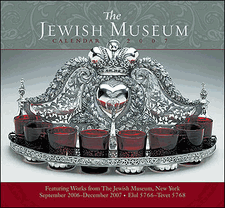|

The Hebrew calendar
(Hebrew: הלוח העברי) or Jewish calendar is the annual
calendar used in Judaism. It determines the dates of
the Jewish holidays, the appropriate Torah portions
for public reading, Yahrzeits (the date to commemorate
the death of a relative), and the specific daily
Psalms which some customarily read. Two major forms of
the calendar have been used: an observational form
used prior to the destruction of the Second Temple in
70 CE, and based on witnesses observing the phase of
the moon, and a rule-based form first fully described
by Maimonides in 1178 CE, which was adopted over a
transition period between 70 and 1178.
The "modern" form is a rule-based lunisolar calendar,
akin to the Chinese calendar, measuring months defined
in lunar cycles as well as years measured in solar
cycles, and distinct from the purely lunar Islamic
calendar and the almost entirely solar Gregorian
calendar. Because of the roughly 11 day difference
between twelve lunar months and one solar year, the
calendar repeats in a Metonic 19-year cycle of 235
lunar months, with an extra lunar month added once
every two or three years, for a total of seven times
every nineteen years. As the Hebrew calendar was
developed in the region east of the Mediterranean Sea,
references to seasons reflect the times and climate of
the Northern Hemisphere. |